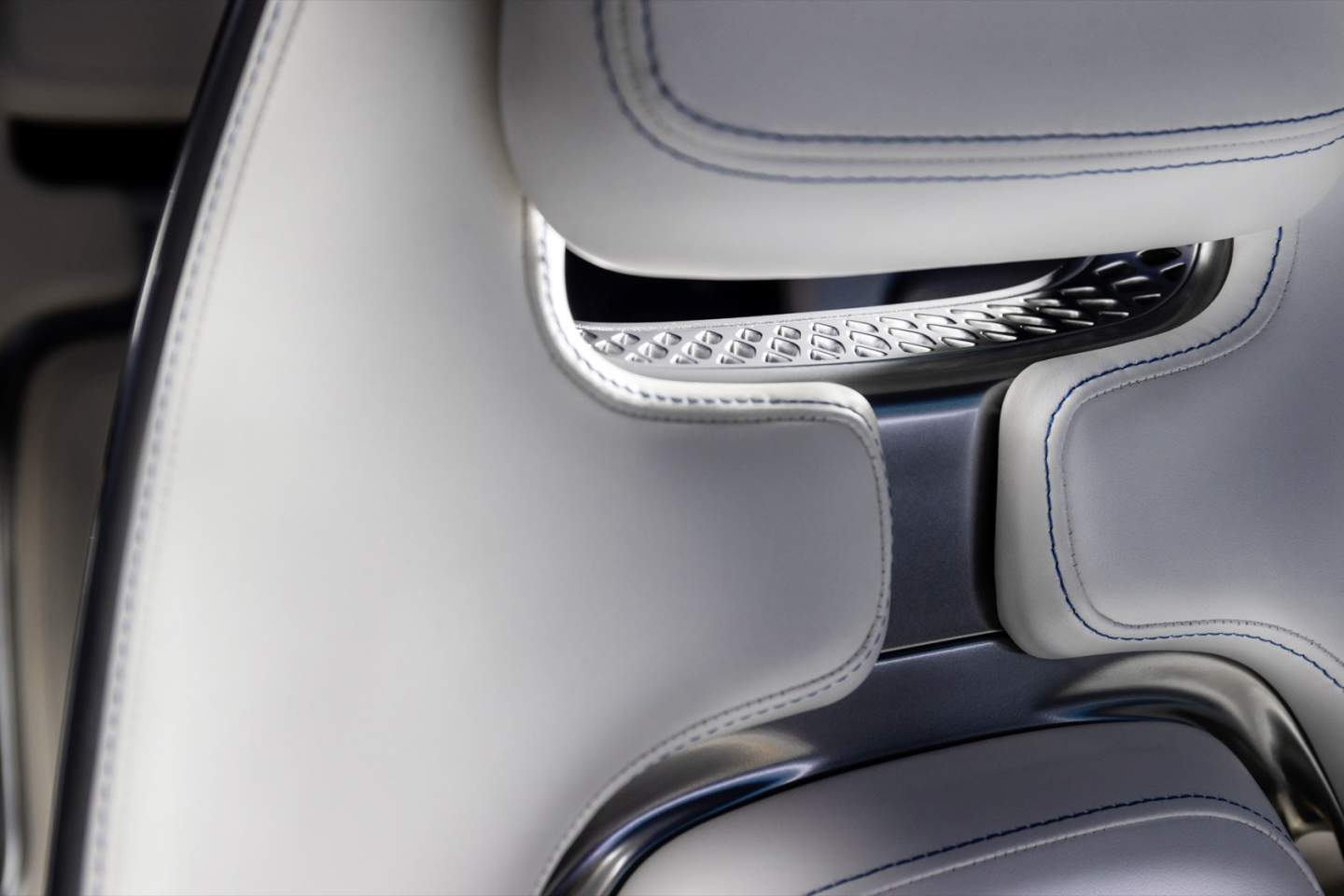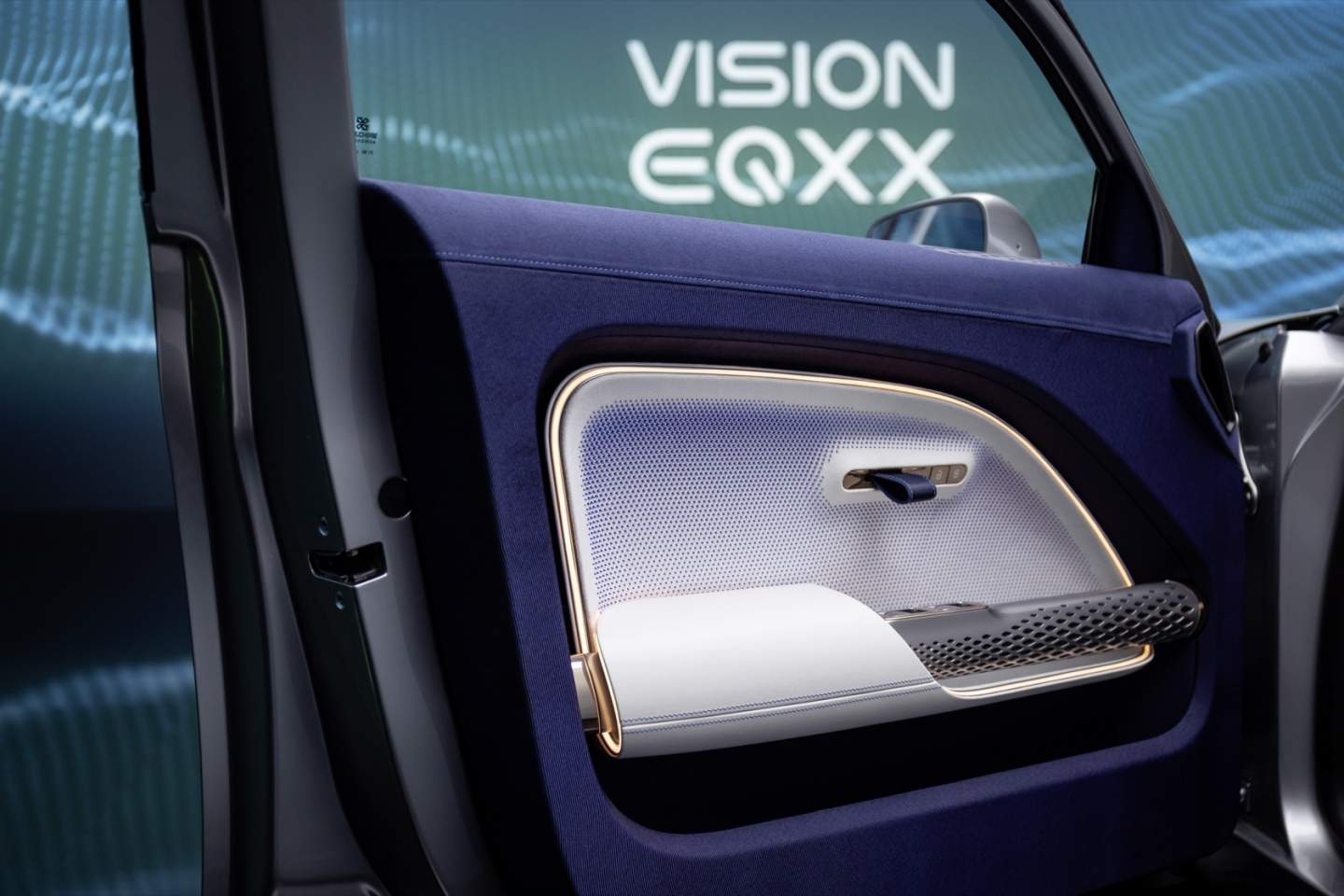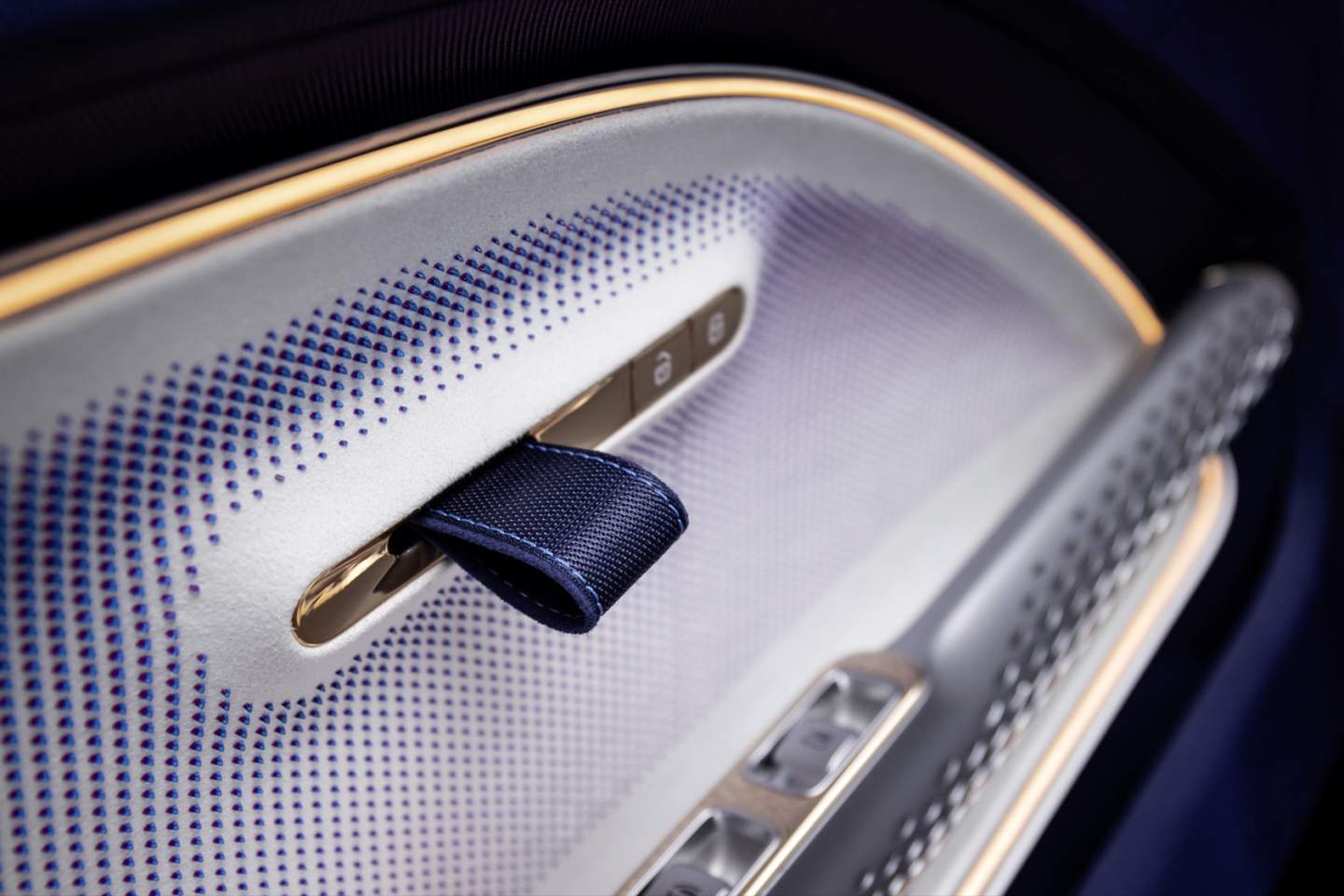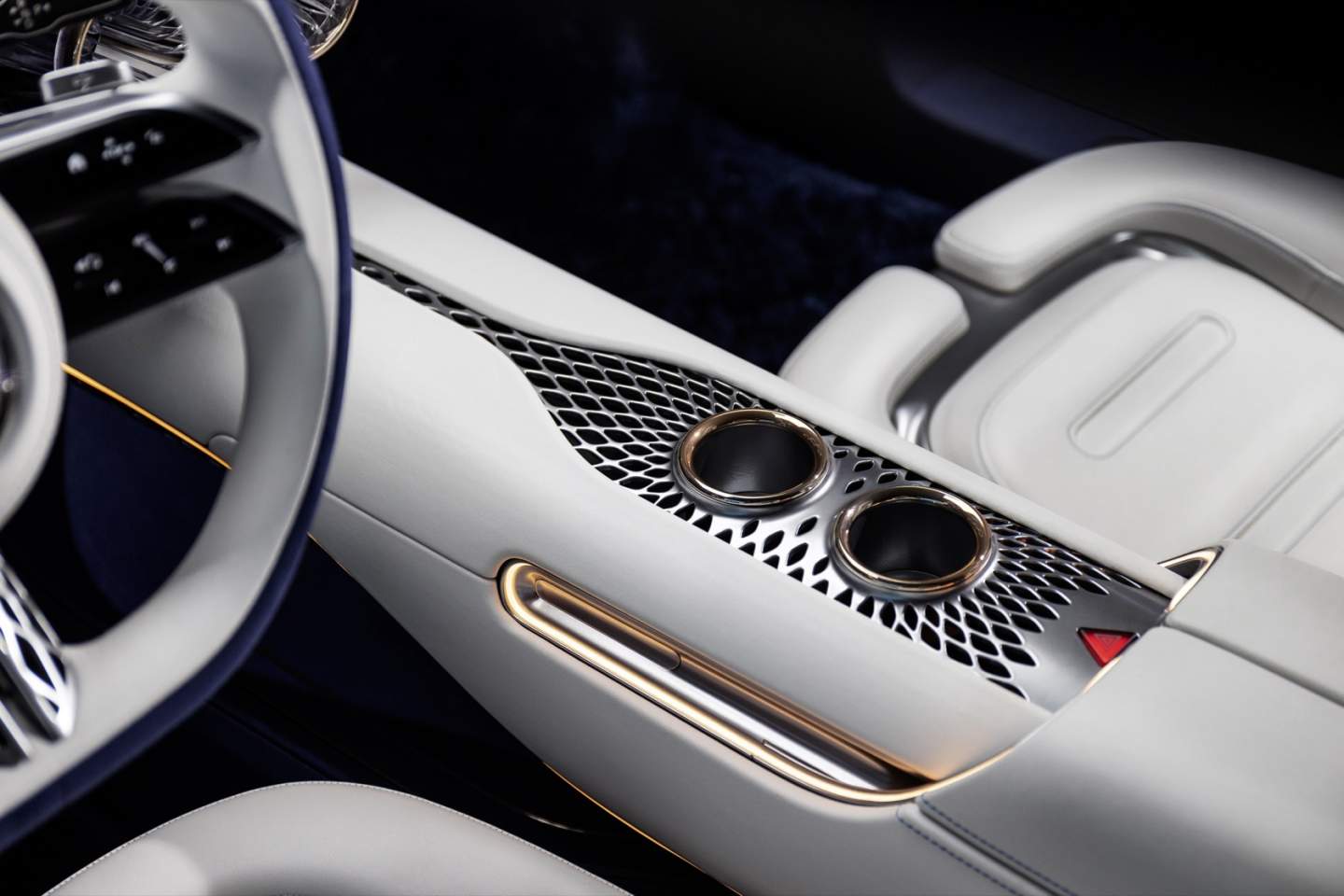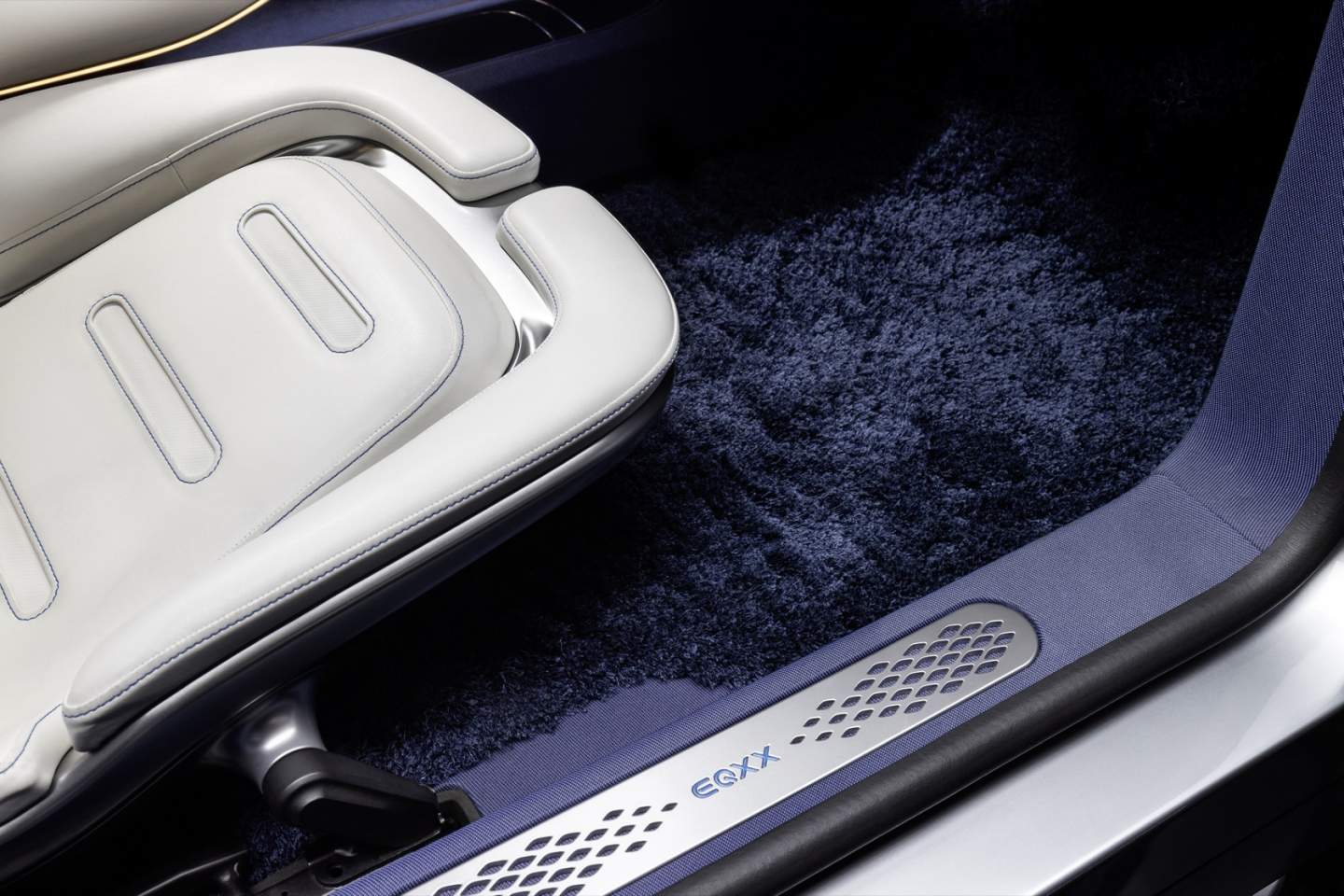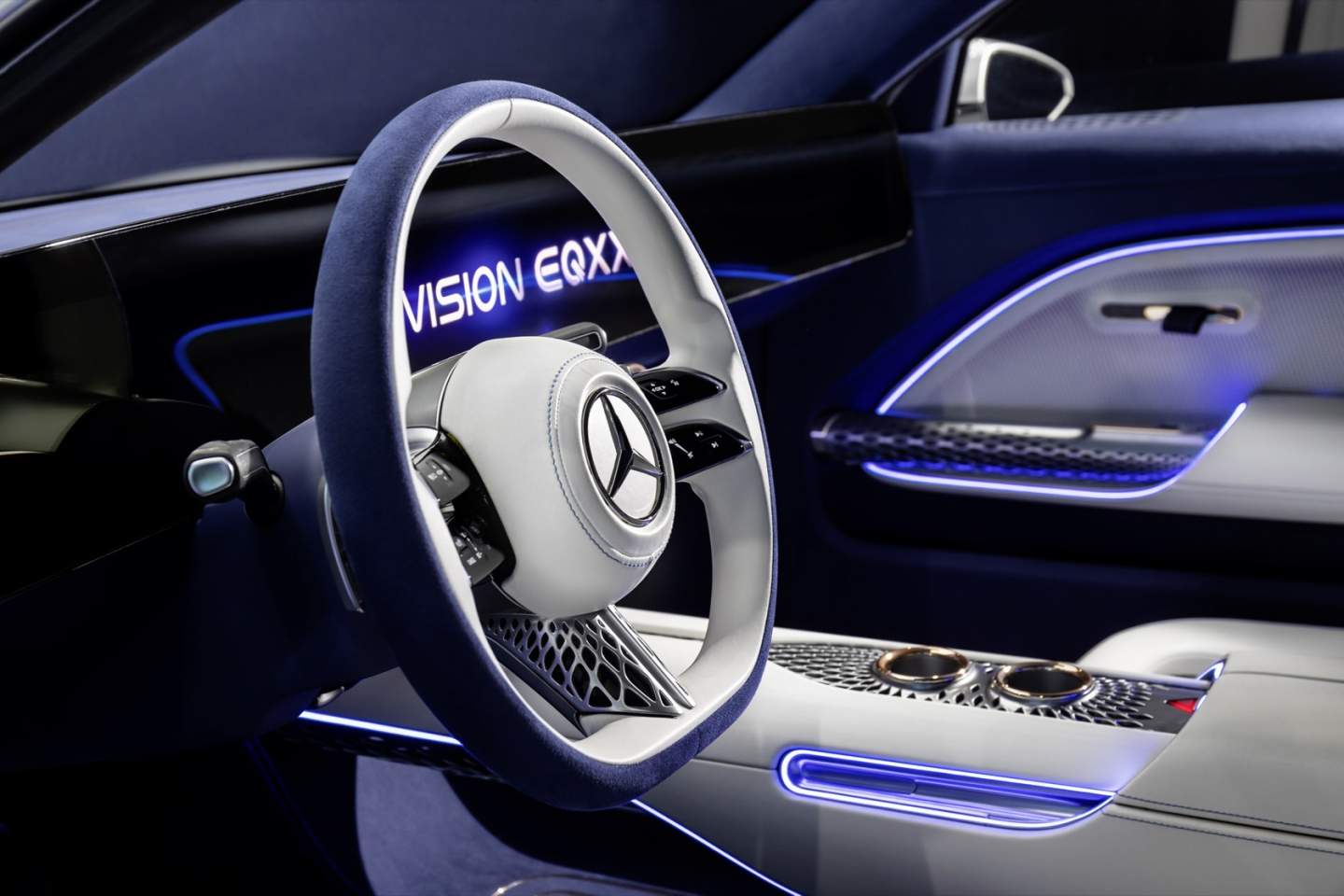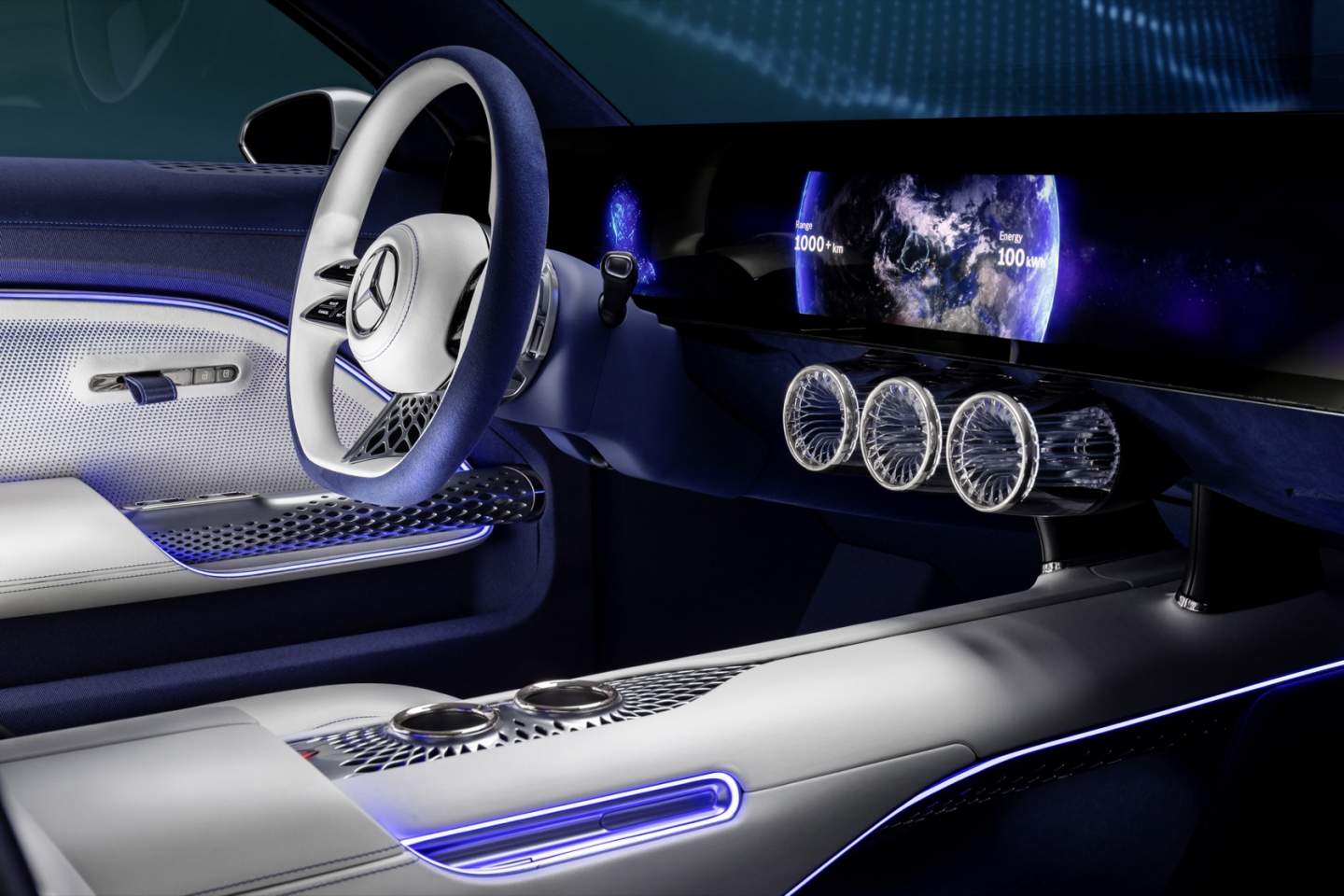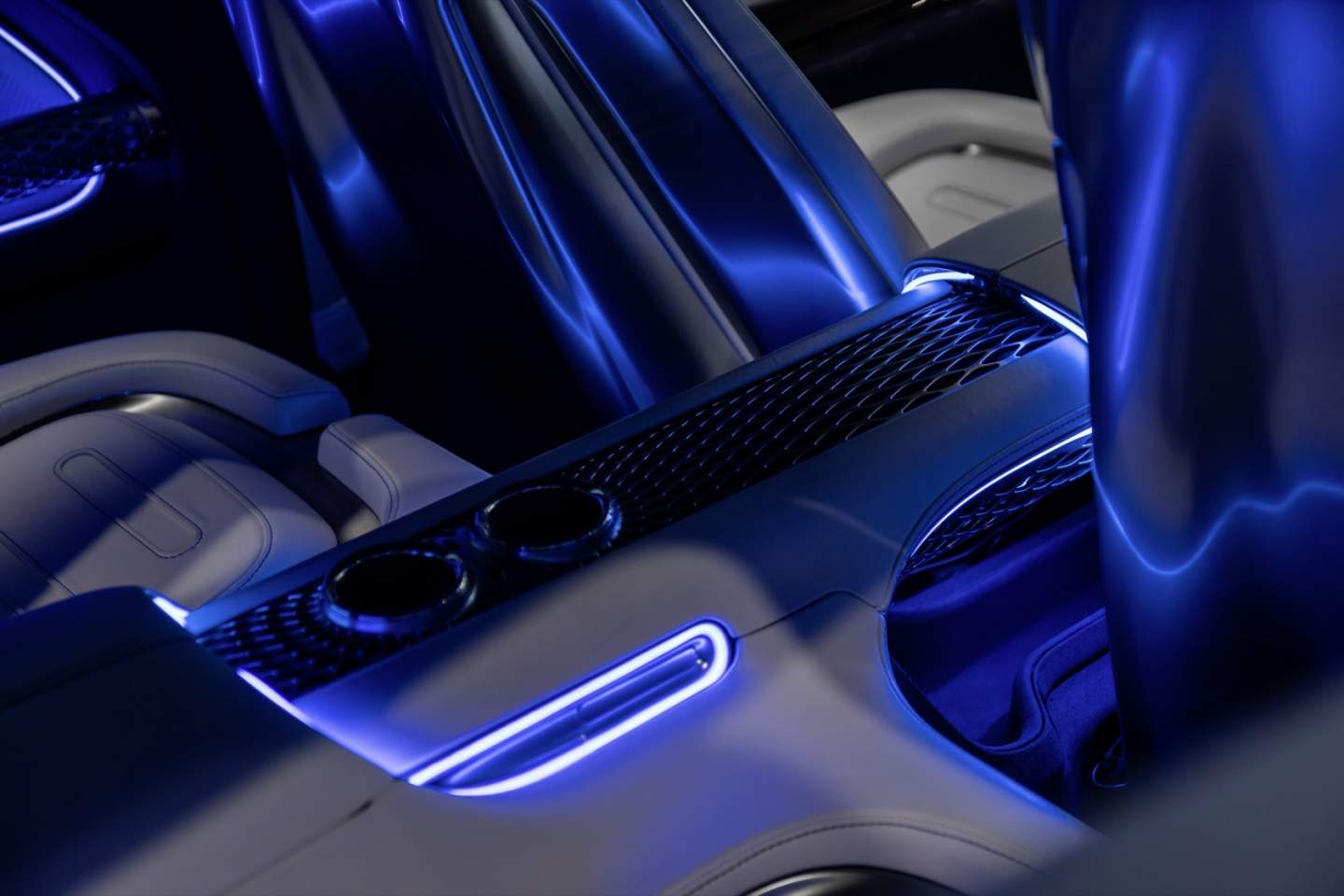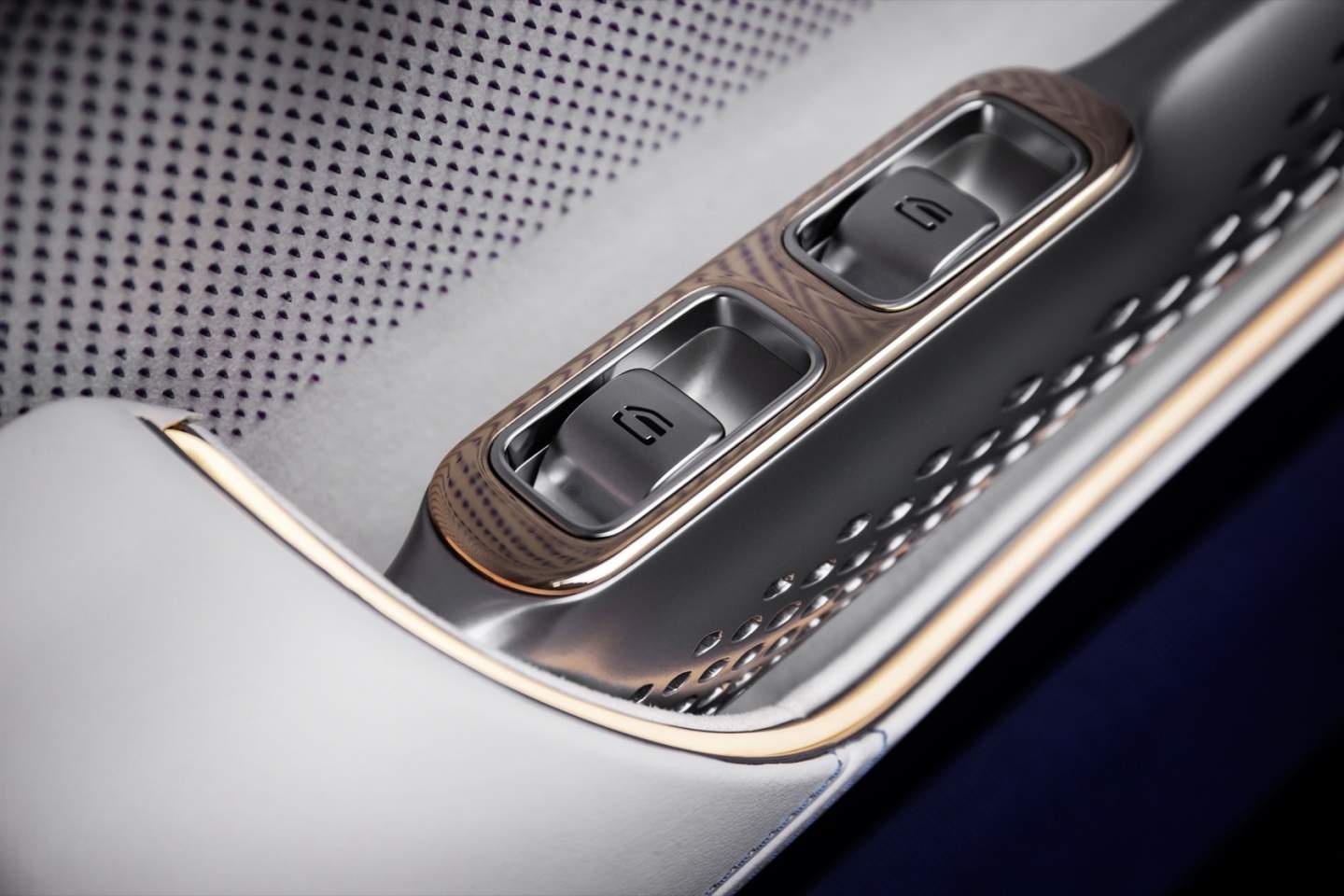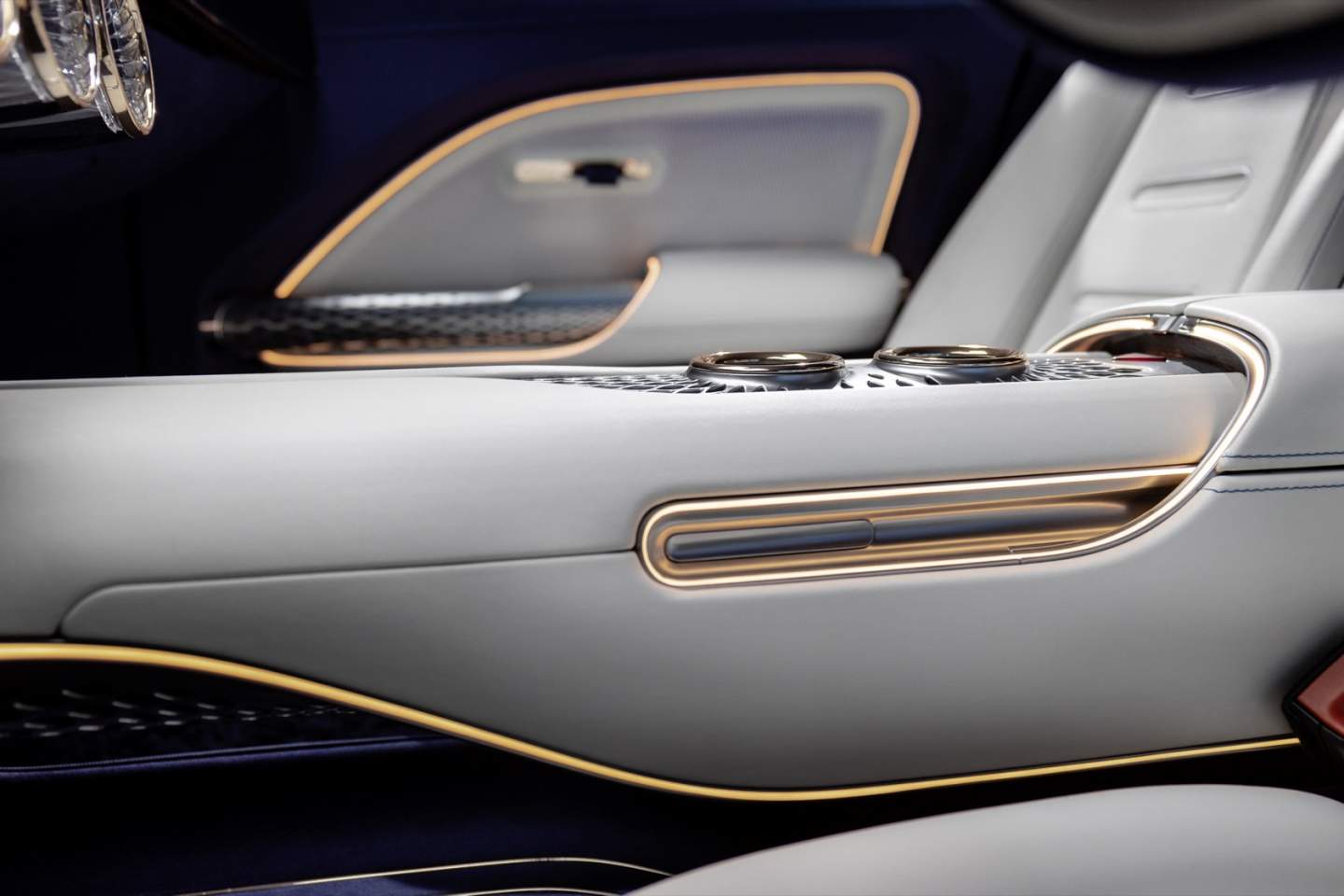Mercedes-Benz VISION EQXX Is A 620+ Mile EV That Takes An Exciting Road To Range
Mercedes-Benz promised new EVs with much longer range, and now the VISION EQXX – capable of driving more than 620 miles on a charge – is sketching out just how the automaker could achieve that at CES 2022. Currently a concept, though one which Mercedes plans to mine heavily for production technologies, the shapely sedan breaks the 1,000 kilometer barrier without resorting to the easiest fix for range-anxiety.
"The Mercedes-Benz VISION EQXX is how we imagine the future of electric cars," Ola Källenius, Chairman of the Board of Management of Daimler AG and Mercedes-Benz AG, says of the concept. "Just one-and-a-half years ago, we started this project leading to the most efficient Mercedes-Benz ever built – with an outstanding energy consumption of less than 10 kWh per 100 kilometers. It has a range of more than 1,000 kilometers on a single charge using a battery that would fit even into a compact vehicle."
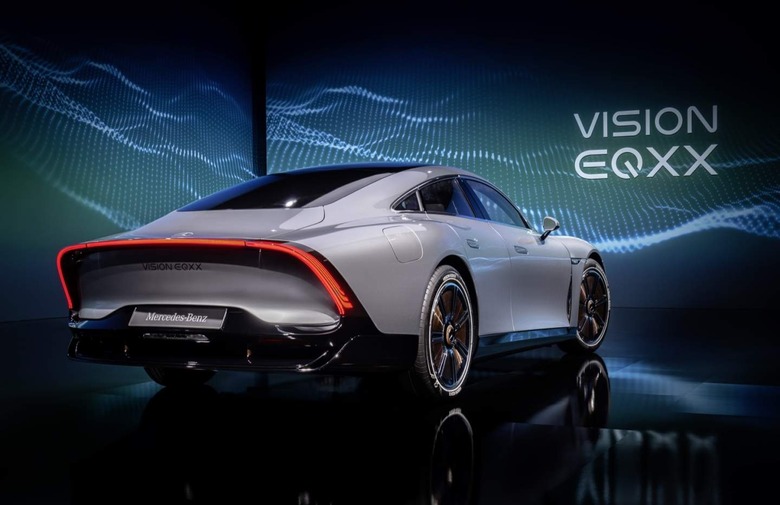
Importantly, Mercedes' engineers didn't just drop in a bigger battery and call it a day. That's the strategy we've seen many EVs take, and it's an understandable one: more power onboard means more power for driving. Problem is, it also makes for a heavier – and thus less efficient – vehicle, not to mention a more expensive one.
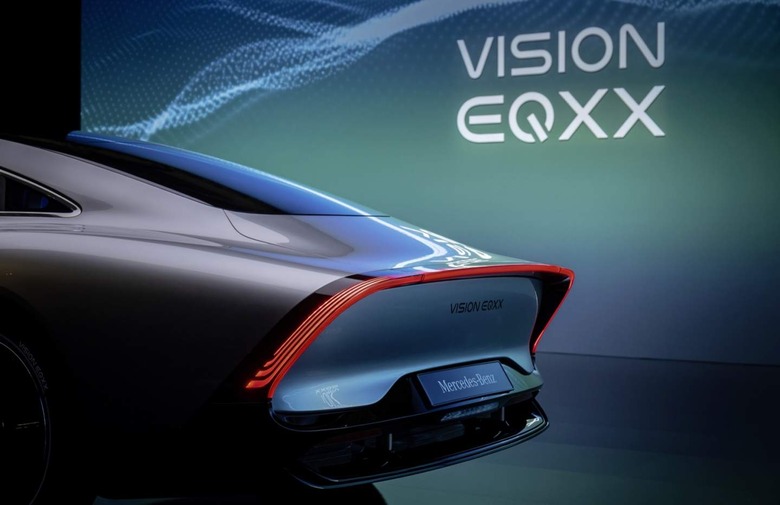
In the current era of electronics shortages, meanwhile, squeezing in more battery cells also looks uncomfortably profligate. At a time when a pinched supply chain for components is holding back new vehicle production, allocating bigger batteries means making fewer EVs. That attempt to shift away from being needlessly wasteful is another part of the VISION EQXX story.
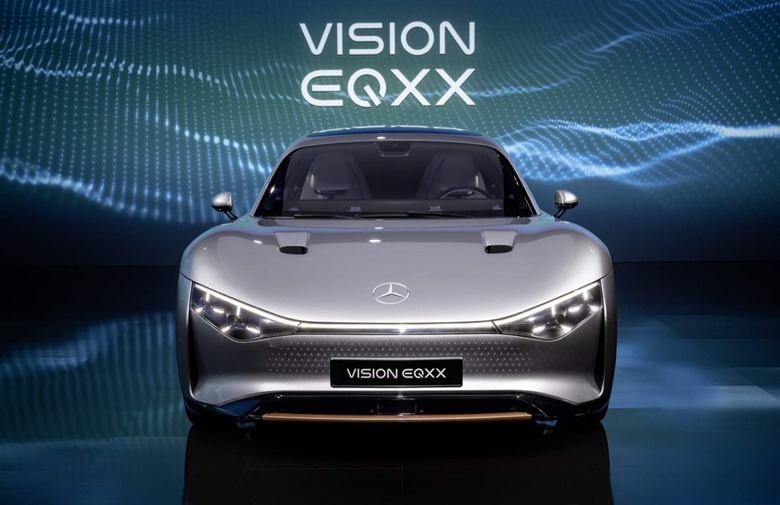
"Electric range sounds easy but is a complex technical challenge," Joerg Bartels, Vice President for Vehicle Engineering and Overall Vehicle Functions says. "The easiest way is to put a bigger battery in the car. However, this leads to diminishing returns due to size and weight. This is definitely not the smartest route and it's also not the best use of scarce resources. With the VISION EQXX, we're presenting the results of an extraordinary challenge: we pushed efficiency to a totally new level."
In this case, efficiency means a focus on weight, drivetrain capabilities, and aerodynamics, among other factors. The roughly 150 kW electric drivetrain, for example, is 95% efficient, Mercedes claims. That means 95% of the energy from the battery ends up at the VISION EQXX's wheels – in comparison to just 30% of the energy from an internal combustion drivetrain.
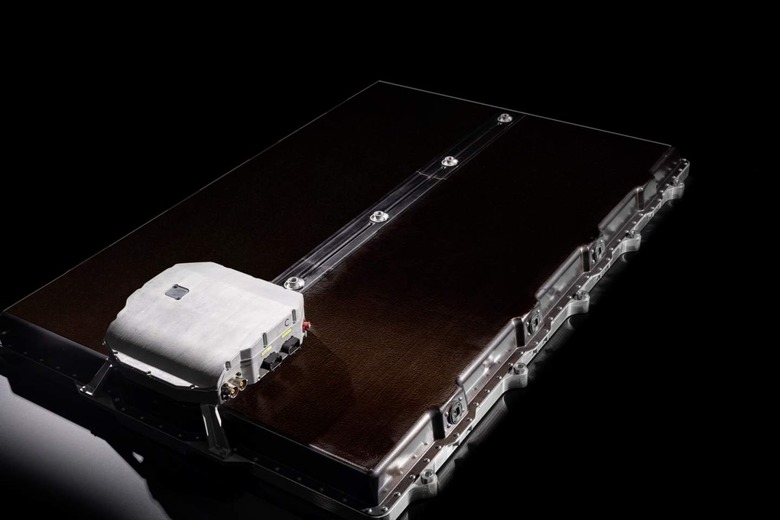
Mercedes' borrowed the power electronics unit from the Mercedes-AMG Project ONE hypercar, and them combined it with next-gen silicon carbides and a whole new battery pack design. It offers just shy of 100 kWh of usable energy but with a density of nearly 400 Wh/l: that's about the same energy as the Mercedes-Benz EQS luxury electric sedan has, but in a pack that's half the size and 30% lighter.
It's a 900 volt system, too, and Mercedes-Benz R&D and HPP co-developed a new battery pack platform and separated out the electrical and electronic components. The result means more space for cells, but also should make installation and removal easier later on. Racing tech lent its light-weighting for the composite used for the battery pack lid, a carbon fiber reinforced material derived from sugar cane waste, and the whole thing tips the scales at under 1,100 pounds.
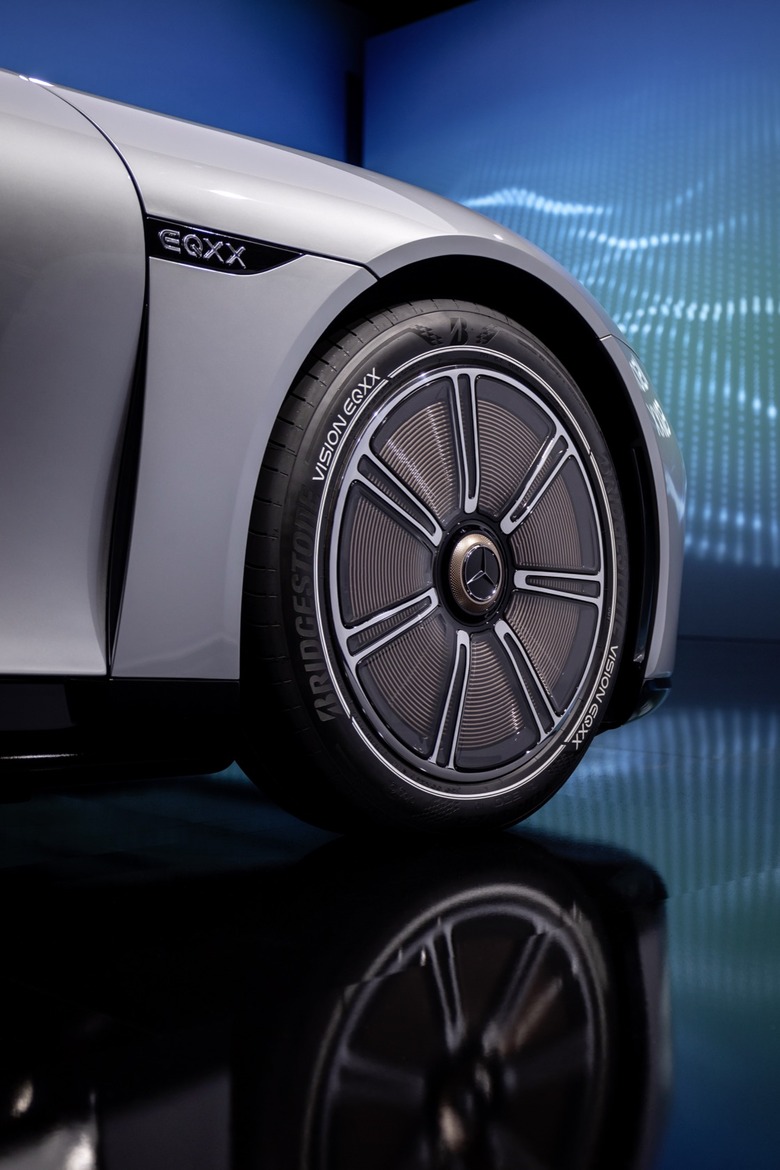
Considering the VISION EQXX overall is under 3,900 pounds – despite having a wheelbase only 16 inches or so shorter than that of an S-Class sedan – it's clear Mercedes has put the concept on a serious diet. The body is styled with aerodynamics as its lodestar, achieving a drag coefficient of just 0.17 and featuring a water droplet-like profile. A retractable rear diffuser slides out at higher speeds, while covers for the 20-inch forged-magnesium wheels, hidden air pathways, active cooling shutters, and a narrower rear track all help make the car extra-slippery.
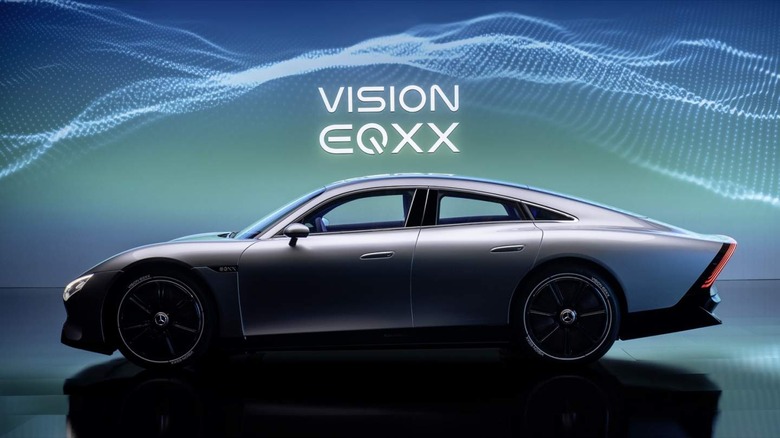
At the front, the gloss-black grille is topped with a wide band of lighting and rose-gold highlights, while the lamps have two star-shaped elements to match the 2D star pattern on the lower bumper. Mercedes says we can expect that sort of detailing in future production EVs.
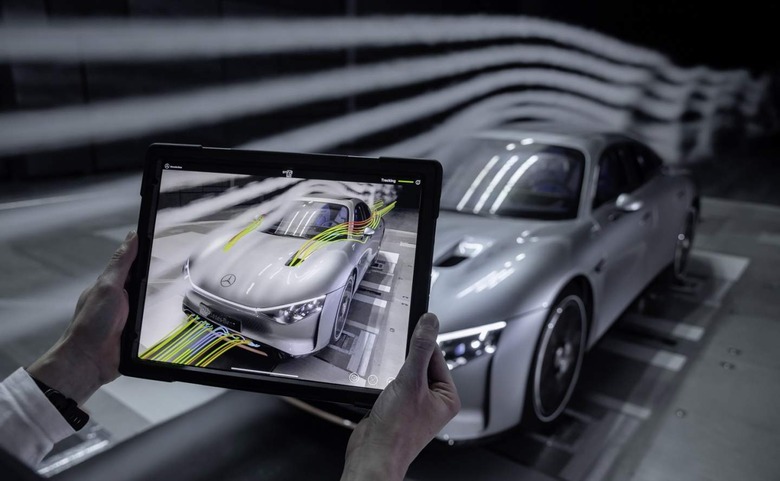
So, too, will the VISION EQXX's cabin help shape upcoming Mercedes cars. Simpler and cleaner than the automaker's current design language, it has a 47.5-inch 8K resolution display that runs from A-pillar to A-pillar, using mini-LED tech and offering 3D navigation. There's a dedicated BrainChip Alida-based AI chipset which runs the "Hey Mercedes" voice control system, and the new "road trip sidekick" which sounds more realistic and can give better, more natural suggestions that learn from the driver's habits and preferences.
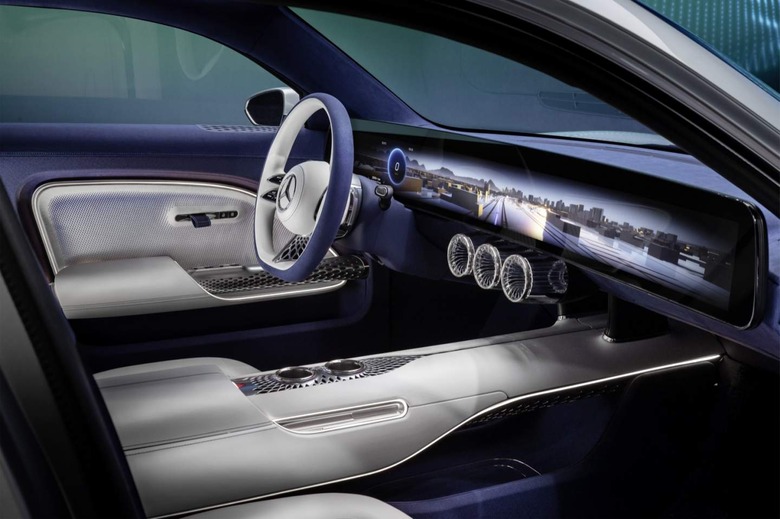
Unsurprisingly, one of the key priorities there is frugality. The navigation system takes into account upcoming route, terrain, weather conditions, and more, for example, but also uses driver feedback to help shape how the VISION EQXX is piloted. All of the factors which affect range are summed up in a real-time orb graphic, which can be watched to make sure you're driving in the most efficient manner.
That also taps the new sound system, which is designed to be both more effective and more power-miserly than traditional audio setups. Each headrest gets two broadband speakers, and there's a bass exciter in each seat. That way, each person in the car gets their own, individually-controlled sound zone, and it's less demanding on power as the sound doesn't have to travel so far to each listener's ears.
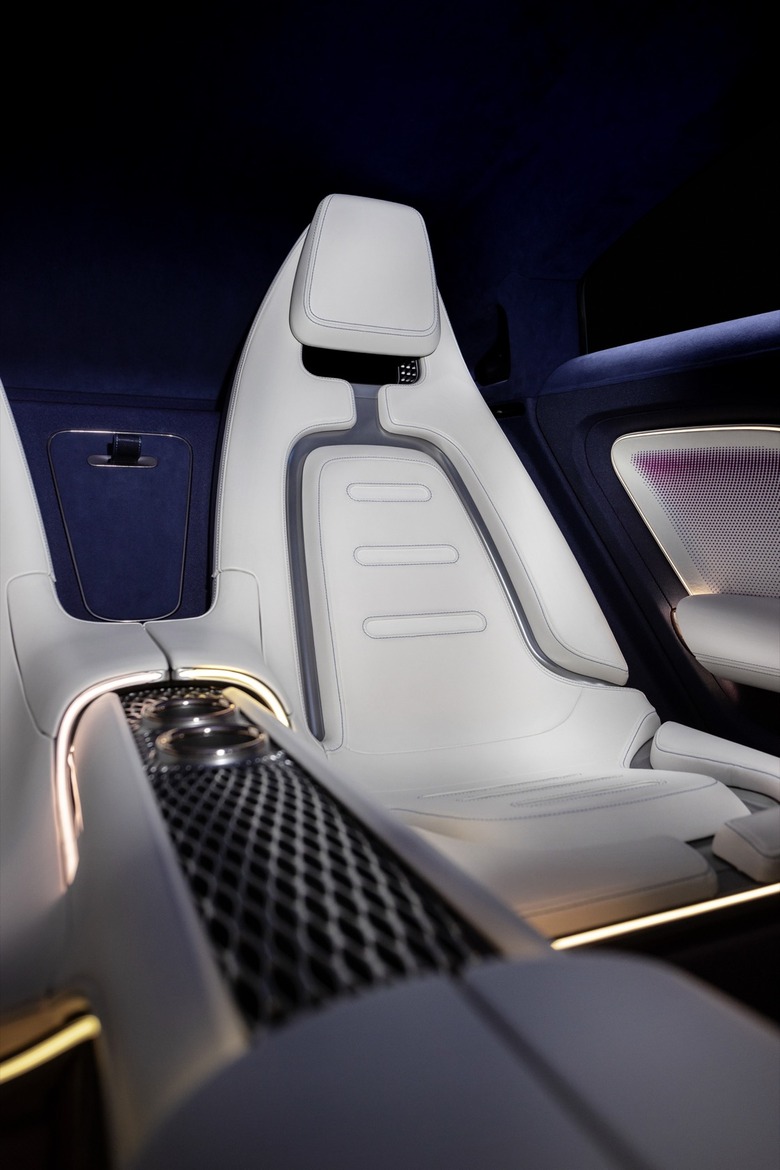
As for materials, the VISION EQXX eschews traditional leather and wood in favor of more sustainable alternatives. AMsilk Biosteel – a vegan silk-like biofabricated fabric – is used for the first time in the automotive segment, for the car's interior door pulls. Mylo vegan leather is used on the seats, while Deserttex cactus-based biomaterial and bio-based polyurethane matrix is another leather alternative.
The carpets are 100% bamboo fiber, and there's recycled PET bottles, plastic substitute, and high-recycled-content Dynamica fabric variously implemented for the trim.
On the roof, there are 117 solar cells. Mercedes says that panel can add more than 15 miles of range on long-distance journeys, in ideal condition. Solar energy is stored in a lithium-iron-phosphate battery, and used for climate control, lighting, infotainment, and more. A heat pump relies on waste drivetrain heat and, in a first for Mercedes-Benz, heat from the ambient air, and uses it to help precondition the cabin temperature.
Then again, reducing excess heat from the outset is also a key strategy. The VISION EQXX's thermal management system relies on a cooling plate installed in the EV's floor, so that the flow of air there can be used to cool it down. Mercedes says that's good for another 12 miles or so of range. If more cooling is required, active shutters can open and direct air through guides to the key electronics.
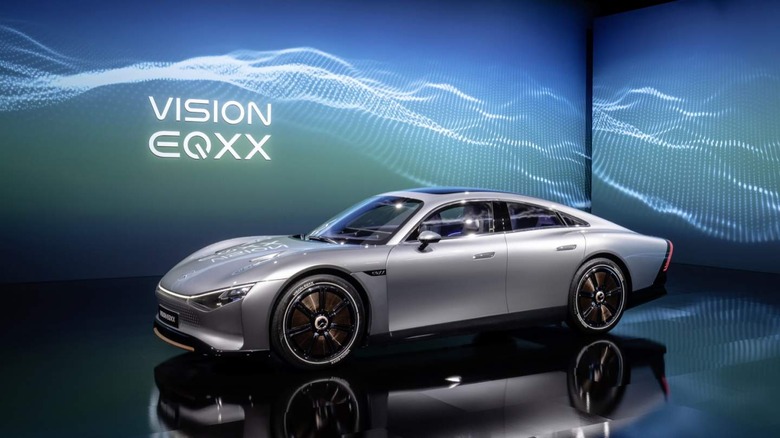
What's arguably most exciting is just how practical all of this is, Mercedes says. "The VISION EQXX is an exciting, inspirational, yet completely realistic way forward for electric vehicle technology," the automaker argues, both in terms of drivetrain and sustainable materials, but also for how computer modeling and such can be implemented to speed up new vehicle development. While upcoming Mercedes EVs may not look quite so striking as this concept car, the promise is that they'll still benefit from some of the efficiency and new luxury developments it debuts.

